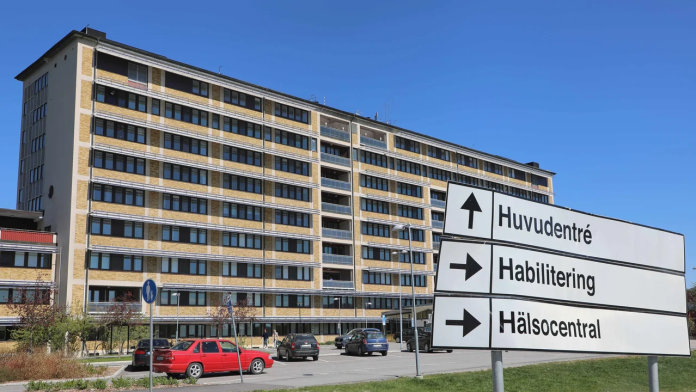Sweden’s smaller acute care hospitals are facing a deepening financial crisis, with regional councils imposing drastic cuts to 24/7 emergency services amid mounting economic pressures, according to Euractiv.
Doctors and healthcare advocates warn that the piecemeal closures risk patient safety, national emergency preparedness, and the principle of equal healthcare access, a cornerstone of Sweden’s welfare system.
The northern town of Sollefteå, population 40,000, has become emblematic of the crisis. On 5 May, the Västernorrland regional council—led by a coalition of Social Democrats, Moderates, and the Centre Party—voted to strip the local hospital of anaesthesia, intensive care, paediatric inpatient services, and scheduled surgery.
The move, aimed at saving €5 million annually, will cost 146 healthcare workers their jobs and leave the hospital functioning primarily as a geriatric facility with limited emergency observation beds.
The decision follows a decade of cuts, including the 2017 closure of Sollefteå’s maternity unit. Just 23 days after that closure, a woman gave birth in a car en route to hospitals 90–120 kilometres away. In 2022, an 18-year-old student died at the hospital after his spleen ruptured, with no surgeon available due to prior austerity measures.
Broader trends and political paralysis
Nearly 400 legal appeals have now been filed against the latest cuts, while the municipality has pleaded unsuccessfully for the government to designate Sollefteå a “national standby hospital”.
Elin Karlsson, president of the Swedish Hospital Doctors’ Association, warns that Sweden’s 21 regions—each independently managing healthcare—lack a cohesive national plan.
We do not have a complete picture of how this trend affects patients or our national emergency capacity.
Karlsson stresses that losing competencies like acute surgery and intensive care undermines crisis readiness. Kjell Asplund, professor emeritus at Umeå University, echoed this, urging a strategic review.
Now all decisions are taken at the regional level. A national strategic approach is also needed: how many acute care hospitals does Sweden need in the longer term, and what should the distribution be between smaller and larger hospitals?
The Sollefteå cuts are part of a wider wave of closures. Since November 2023, acute care units in Lidköping, Köping, and Oskarshamn have been shuttered, forcing patients to travel up to 60 kilometres for emergency treatment. While protests spared units in Arvika and Lindesberg, the latter will still lose acute surgery.
A parliamentary committee investigating state involvement in healthcare is due to report on 2 June, with proposals expected to address funding inequalities. However, the government has yet to respond to Sollefteå’s plea for intervention, even as NATO prepares to issue demands, including healthcare-related, to Sweden this summer.
